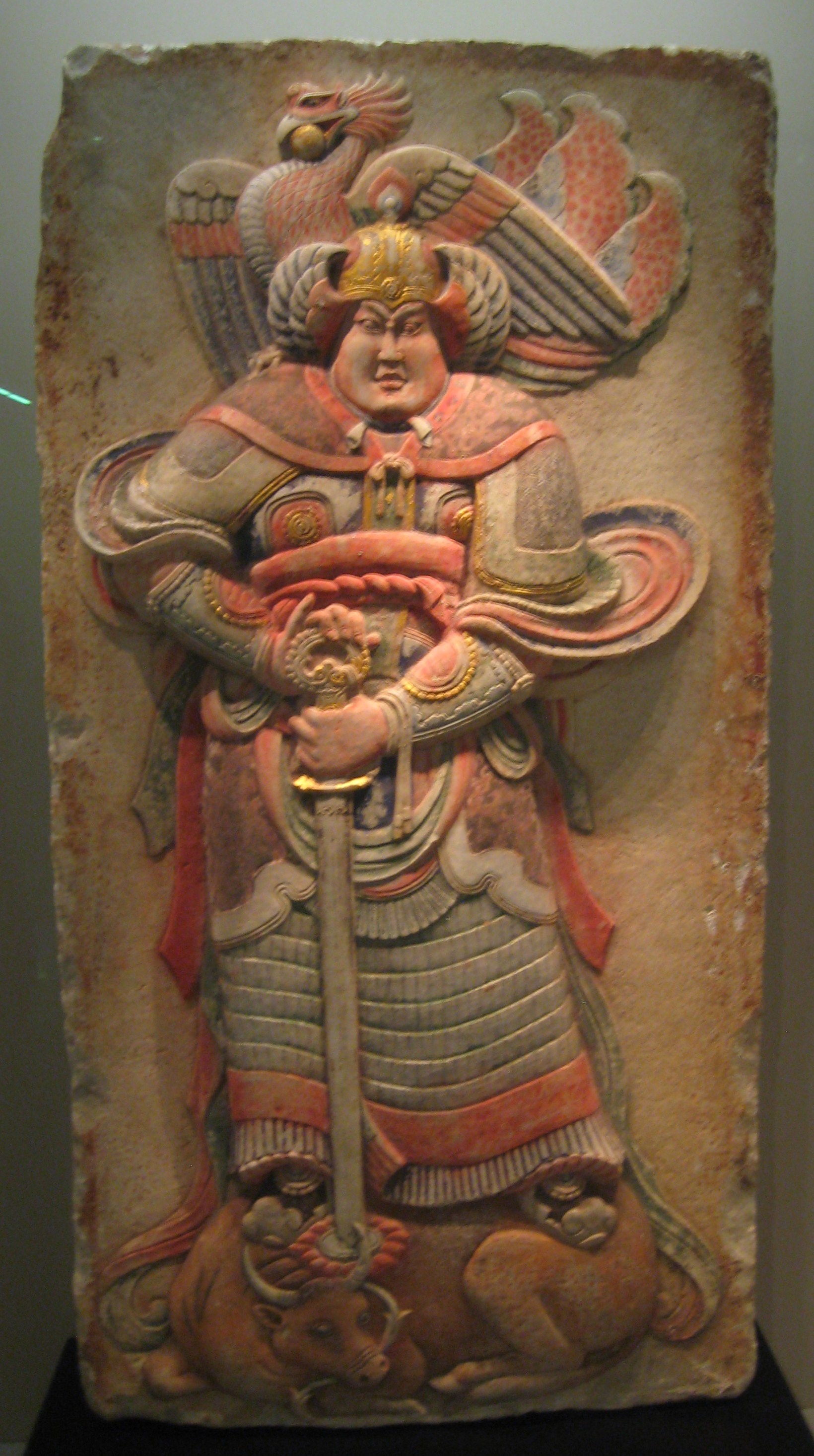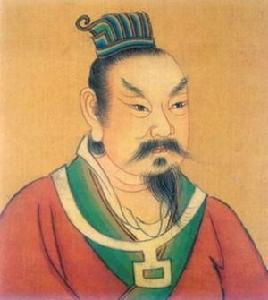|
Li Renfu
Li Renfu (李仁福) (died March 10, 933''Zizhi Tongjian'', vol. 278. Academia Sinicabr>Chinese-Western Calendar Converter), possibly né Tuoba Renfu (拓拔仁福), formally the Prince of Guo (虢王), was an ethnic Dangxiang (Tangut) warlord during the Five Dynasties and Ten Kingdoms Period, ruling Dingnan Circuit (定難, headquartered in modern Yulin, Shaanxi) from 909 or 910 to his death in 933, as its military governor (''Jiedushi'') in ''de facto'' independence. Background Li Renfu was said to be from the same Tuoba clan as the late-Tang Dynasty warlord Li Sigong (né Tuoba Sigong), the first Dangxiang military governor of Dingnan,'' Old History of the Five Dynasties'', vol. 132. and therefore was ethnically Dangxiang.See '' New Book of Tang'', vol. 221, part 1. His relationship to Li Sigong was not clear from the traditional Chinese sources—the '' Old History of the Five Dynasties'' indicated that he also took the Tang Dynasty imperial clan surname of Li when Li Sig ... [...More Info...] [...Related Items...] OR: [Wikipedia] [Google] [Baidu] |
Zizhi Tongjian
''Zizhi Tongjian'' () is a pioneering reference work in Chinese historiography, published in 1084 AD during the Northern Song dynasty in the form of a chronicle recording Chinese history from 403 BC to 959 AD, covering 16 dynasties and spanning almost 1400 years. The main text is arranged into 294 scrolls (''juan'' , equivalent to a chapter) totaling about 3 million Chinese characters. In 1065 AD, Emperor Yingzong of Song commissioned his official Sima Guang (1019–1086 AD) to lead a project to compile a universal history of China, and granted him funding and the authority to appoint his own staff. His team took 19 years to complete the work and in 1084 AD it was presented to Emperor Yingzong's successor Emperor Shenzong of Song. It was well-received and has proved to be immensely influential among both scholars and the general public. Endymion Wilkinson regards it as reference quality: "It had an enormous influence on later Chinese historical wri ... [...More Info...] [...Related Items...] OR: [Wikipedia] [Google] [Baidu] |
Shaanxi
Shaanxi (alternatively Shensi, see #Name, § Name) is a landlocked Provinces of China, province of China. Officially part of Northwest China, it borders the province-level divisions of Shanxi (NE, E), Henan (E), Hubei (SE), Chongqing (S), Sichuan (SW), Gansu (W), Ningxia (NW) and Inner Mongolia (N). Shaanxi covers an area of over with about 37 million people, the 16th highest in China. Xi'an – which includes the sites of the former Capitals of China, Chinese capitals Fenghao and Chang'an – is the Xi'an, provincial capital as well as the largest city in Northwest China and also one of the oldest cities in China and the oldest of the Historical capitals of China, Four Great Ancient Capitals, being the capital for the Western Zhou, Western Han, Sima Jin, Jin, Sui dynasty, Sui and Tang dynasty, Tang List of Chinese dynasties, dynasties. Xianyang, which served as the Qin dynasty capital, is just north across Wei River. The other Prefectures of China, prefecture-level pr ... [...More Info...] [...Related Items...] OR: [Wikipedia] [Google] [Baidu] |
Xianyang
Xianyang () is a prefecture-level city in central Shaanxi province, situated on the Wei River a few kilometers upstream (west) from the provincial capital of Xi'an. Once the capital of the Qin dynasty, it is now integrated into the Xi'an metropolitan area, one of the main urban agglomerations in northwestern China, with more than 7.17 million inhabitants, its built-up area made of 2 urban districts (Qindu and Weicheng) was 945,420 inhabitants at the 2010 census. It has a total area of . Xianyang is the seat of the Xi'an Xianyang International Airport, the main airport serving Xi'an and the largest airport in Northwest China, and one of the top 40th- busiest airports in the world. Xianyang is one of the top 500 cities in the world by scientific research outputs, as tracked by the Nature Index. It is home to the main campus of Northwest A&F University (NWAFU), one of the world's top universities in agriculture science related fields, and a member of "Project 985" club which is ... [...More Info...] [...Related Items...] OR: [Wikipedia] [Google] [Baidu] |
Li Jihui
Li Jihui () (died 914), né Yang Chongben () (and usually referred to by that name in historical sources), was a Chinese politician and warlord in the late Chinese dynasty Tang Dynasty and early Five Dynasties and Ten Kingdoms period state Qi, who ruled Jingnan Circuit (靜難, headquartered in modern Xianyang, Shaanxi) as its military governor (''Jiedushi''). Background It is not known when Yang Chongben was born, and the traditional historical sources were explicit in stating that the authors did not know his geographical origin.'' History of the Five Dynasties'', vol. 13.''New History of the Five Dynasties'', vol. 40. In his youth, he was adopted by the general Li Maozhen, and so changed his name to Li Jihui. The first historical record of a battle he was involved in was in 897. when he was one of the officers that Li Maozhen, then the military governor of Fengxiang Circuit (鳳翔, headquartered in modern Baoji, Shaanxi), sent to aid his ally Gu Yanhui the military governor ... [...More Info...] [...Related Items...] OR: [Wikipedia] [Google] [Baidu] |
Qi (Five Dynasties)
Qi () was a kingdom during the Five Dynasties and Ten Kingdoms period in Chinese history. The kingdom, at its prime, covered parts of modern-day Gansu, Shaanxi, and Sichuan provinces, but eventually shrank to only the immediate area around its capital Fengxiang in Shaanxi. Its only ruler was Li Maozhen, who later submitted to Later Tang. (After Li Maozhen's death in 924, his son Li Congyan would continue to govern Fengxiang until 926, when he was removed by the Later Tang's emperor Li Cunxu,''Zizhi Tongjian ''Zizhi Tongjian'' () is a pioneering reference work in Chinese historiography, published in 1084 AD during the Northern Song dynasty in the form of a chronicle recording Chinese history from 403 BC to 959 AD, covering 16 dynast ...'', vol. 274. although he would serve three later stints as governor of Fengxiang.''Zizhi Tongjian'', vol. 275.''Zizhi Tongjian'', vol. 279.) References Former countries in Chinese history {{China-hist-stub ... [...More Info...] [...Related Items...] OR: [Wikipedia] [Google] [Baidu] |
Li Maozhen
Li Maozhen (; 856 – May 17, 924), born Song Wentong (), courtesy name Zhengchen (), formally Prince Zhongjing of Qin (), was the only ruler of the Chinese Five Dynasties and Ten Kingdoms period state Qi (901–924). He had become a powerful warlord during the reign of Emperor Zhaozong of Tang, the penultimate emperor of the preceding Tang Dynasty, with his power centered on his capital Fengxiang (鳳翔, in modern Baoji, Shaanxi), and at times had effective control of Emperor Zhaozong. However, his power gradually waned due to defeats at the hands of fellow warlords Wang Jian (who would later found Former Shu) and Zhu Quanzhong (who would later found Later Liang). After Zhu usurped the Tang throne and established Later Liang, Li Maozhen refused to submit and continued to use the Tang-bestowed title of Prince of Qi as well as maintain the Tang era name, but his territory became even more reduced due to wars with Former Shu and Later Liang. After Later Liang was conquered by ... [...More Info...] [...Related Items...] OR: [Wikipedia] [Google] [Baidu] |
Later Liang (Five Dynasties)
Liang, known in historiography as the Later Liang () (1 June 907 – 19 November 923) or the Zhu Liang (), was an imperial dynasty of China and the first of the Five Dynasties during the Five Dynasties and Ten Kingdoms period. It was founded by Zhu Wen (Emperor Taizu), after he forced the last emperor of the Tang dynasty to abdicate in his favour (and then murdered him). The Later Liang would last until 923 when it was destroyed by the Later Tang dynasty. Formation Zhu Wen initially allied himself as Huang Chao's lieutenant. However, he took Huang's best troops and established his own power base as a warlord in Kaifeng. By 904, he had exerted control over both of the twin Tang Dynasty capitals of Chang'an and Luoyang. Tang emperor Zhaozong was ordered murdered by Zhu in 904 and the last Tang emperor, Ai Di (Emperor Ai of Tang), was deposed three years later. Emperor Ai of Tang was murdered in 908, also ordered by Zhu. Meanwhile, Zhu Wen declared himself emperor of the new ... [...More Info...] [...Related Items...] OR: [Wikipedia] [Google] [Baidu] |
Zhu Quanzhong
Emperor Taizu of Later Liang (), personal name Zhu Quanzhong () (December 5, 852 – July 18, 912), né Zhu Wen (), name later changed to Zhu Huang (), nickname Zhu San (朱三, literally, "the third Zhu"), was a Chinese military general, monarch, and politician. He was a ''Jiedushi'' (military governor) and warlord who in 907 overthrew the Tang dynasty and established the Later Liang (Five Dynasties), Later Liang as its emperor, ushering in the era of the Five Dynasties and Ten Kingdoms. The last two Tang emperors, Emperor Zhaozong of Tang (Li Jie) and Emperor Ai of Tang (Li Zuo), who "ruled" as his puppets from 903 to 907, were both murdered by him. Zhu Wen initially served as a general under the rebel Huang Chao, but defected to the weakened Tang dynasty in 882. Taking advantage of the total chaos in the wake of Huang Chao's defeat, Zhu Wen was able to conquer parts of central China after destroying warlords such as Qin Zongquan, Shi Pu, Zhu Xuan, and Zhu Jin, although most ... [...More Info...] [...Related Items...] OR: [Wikipedia] [Google] [Baidu] |
Han Chinese
The Han Chinese () or Han people (), are an East Asian ethnic group native to China. They constitute the world's largest ethnic group, making up about 18% of the global population and consisting of various subgroups speaking distinctive varieties of the Chinese language. The estimated 1.4 billion Han Chinese people, worldwide, are primarily concentrated in the People's Republic of China (including Mainland China, Hong Kong and Macau) where they make up about 92% of the total population. In the Republic of China (Taiwan), they make up about 97% of the population. People of Han Chinese descent also make up around 75% of the total population of Singapore. Originating from Northern China, the Han Chinese trace their cultural ancestry to the Huaxia, the confederation of agricultural tribes living along the Yellow River. This collective Neolithic confederation included agricultural tribes Hua and Xia, hence the name. They settled along the Central Plains around the middle and lo ... [...More Info...] [...Related Items...] OR: [Wikipedia] [Google] [Baidu] |
History Of Song (Yuan Dynasty)
The ''History of Song'' or ''Song Shi'' () is one of the official Chinese historical works known as the ''Twenty-Four Histories'' of China that records the history of the Song dynasty (960–1279). It was commissioned in 1343 and compiled under the direction of First Minister Toqto'a and Prime Minister Alutu () during the Yuan dynasty (1271–1368) at the same time as the ''History of Liao'' and the ''History of Jin''. Running to a total of 496 chapters, the ''History of Song'' includes biographies of the Song Emperors along with contemporary records and biographical sketches of Song dynasty politicians, soldiers and philosophers. Publication process Kublai Khan endorsed a proposal by Liu Bingzhong and Wang E (, 1190–1273) for the compilation of historic records of the Song, Jin, and Liao dynasties but the compilation effort stalled for some time. In March 1343, the third year of Ukhaantu Khan, Emperor Huizong of Yuan's Zhizheng Era (), an Imperial edict ordered the creatio ... [...More Info...] [...Related Items...] OR: [Wikipedia] [Google] [Baidu] |



